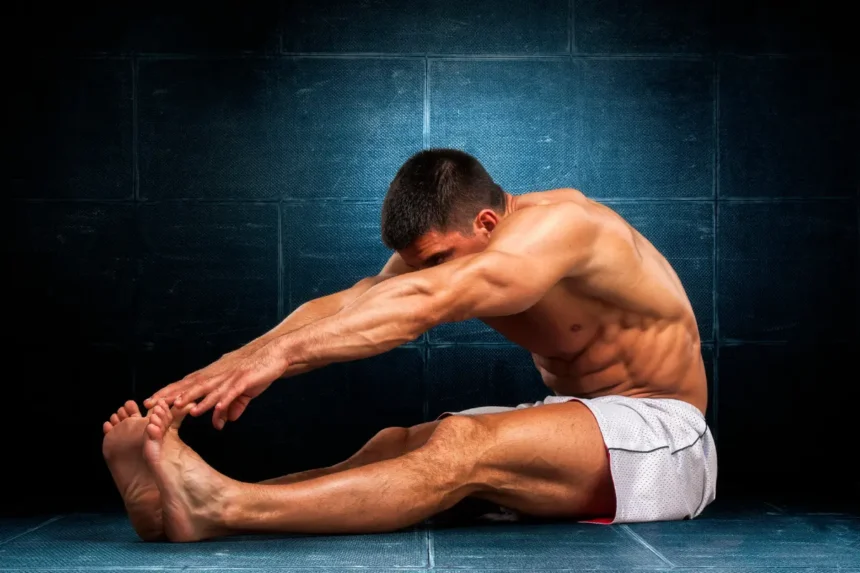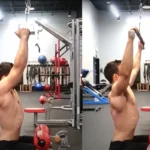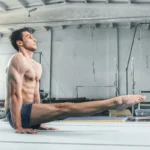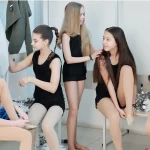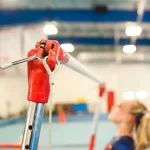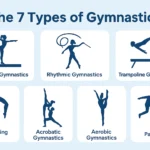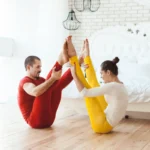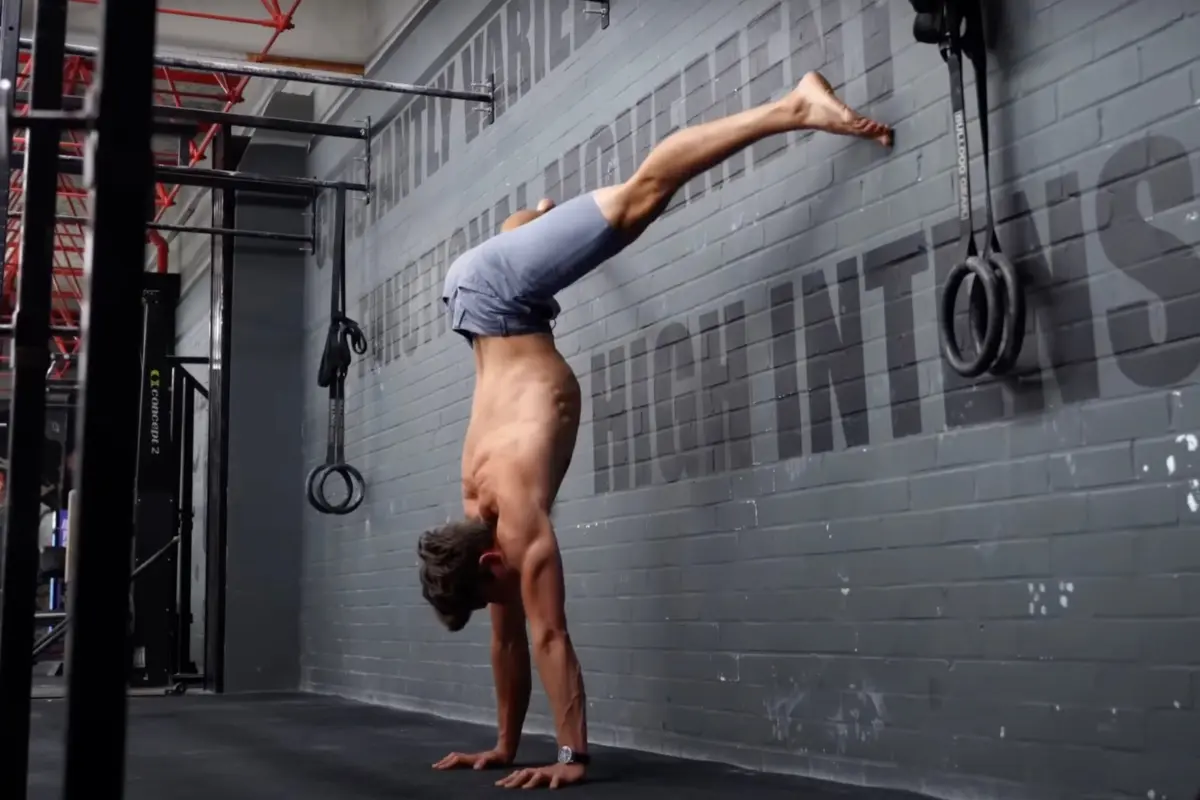Stretching is a non-negotiable for elite athletes, and for Olympic gymnast Jake Dalton, it was the foundation of every training session. In a recent YouTube video, Jake walks viewers through the exact warm-up and flexibility routine he used daily while preparing for the Olympic Games.
Though it may seem simple on the surface, this 20-year habit is a masterclass in warming up efficiently and staying injury-free.
Jake Dalton’s Olympic Stretching Routine: An Inside Look
Jake Dalton, a member of Team USA and a veteran of the 2016 Olympics, shared his daily warm-up and stretching routine. His routine blends dynamic movement, mobility work, and light strength, and it’s packed with smart progressions.
Here’s how he (and most elite gymnasts) build their flexibility day in and day out:
Step 1: Dynamic Warm-Up
Jake Dalton starts with dynamic movement to raise the body’s core temperature, prime the joints, and activate key muscle groups. The entire sequence takes around 10 to 15 minutes and is designed to gradually ease the body into training mode without overtaxing it.
Light Jog
This isn’t a sprint or endurance test. It’s simply meant to elevate heart rate and get blood circulating to muscles and connective tissue. A few laps around the gym floor at a light, steady pace gets the quads, calves, glutes, and hamstrings gently activated. He often used this time to mentally reset and get focused for the work ahead.
Side Shuffles (Sautés)
After jogging, Jake includes a round of side sachets, also known as side shuffles or sautés. These lateral steps work the hip abductors, groin, glutes, and outer thighs, which don’t always get enough attention in a linear warm-up.
Side-to-side movement also stimulates the hip stabilizers, helping with balance, coordination, and injury prevention—especially important for events like pommel horse or rings, where lateral control is everything.
Punches
Once the legs are moving, Jake finishes his general warm-up with a few “punches”—quick, vertical hops meant to stimulate the lower body for explosive power. These hops are light and springy, not heavy jumps. Just enough to reinforce good mechanics: land soft, bounce tall, keep your posture aligned.
Step 2: Mini Conditioning Set
After the body is warm from jogging and mobility drills, Jake Dalton moves right into a quick mini conditioning circuit. It’s simple, time-efficient, and highly targeted—meant to wake up key muscle groups and kick the nervous system into gear before deeper stretching begins.
Jake’s go-to combo consists of just three exercises:
- 10 Jumping Jacks – to elevate heart rate and prep the whole body
- 10 Push-Ups – to engage shoulders, chest, and upper body
- 10 V-Ups – to wake up the core and prepare for compression-based positions
All three exercises can be done quickly, in place, and with no equipment. This set typically takes under 3 minutes but delivers noticeable improvements in muscle responsiveness and readiness.
Step 3: Stretching Routine Start
Once the key muscle groups are activated, he transitions into the main stretching phase.
Neck & Shoulders
Jake starts by releasing tension from the neck, a commonly overlooked area in gymnastics. Neck rolls—forward, backward, and side-to-side—are performed slowly and deliberately. Next, he moves into arm swings—forwards, backwards, and across the body (crisscross style). This warms up the deltoids and helps lubricate the shoulder joints.
Then come the arm circles, starting small and gradually increasing in range. Jake also adds in a variation where the arms swing behind the torso to gently stretch the pecs and anterior deltoids. This one’s subtle but powerful, especially for gymnasts who spend long hours in front-body loaded positions like planches and support holds.
Torso & Back
With the shoulders loosened, Jake focuses next on his spine and core.
He begins with torso twists, arms swinging side-to-side like a pendulum. This move helps free up the thoracic spine and obliques, easing tension that can build from ring and bar work. The movement is rhythmic and light—not forced—allowing the mid-back to move fluidly through its natural rotation.
Then come standing side bends, a deceptively simple stretch that targets the obliques, lats, and intercostal muscles between the ribs. These muscles play a key role in overhead positioning and overall torso mobility.
Step 4: Core and Leg Stretches
After the upper body and spine are fully mobilized, Jake Dalton shifts focus to the lower half. From the constant impact of landings to the demands of explosive takeoffs, the hips, hamstrings, glutes, and groin need to be both flexible and resilient.
Standing Straddle Stretch
Jake starts with a standing straddle, feet wide apart, gently folding forward to each side. First to the right, then the left, then straight down the center. This targets the hamstrings, adductors, and lower back all at once, while also helping decompress the spine after earlier twisting movements.
Side Lunge (Cossack) Stretches
From the straddle, Jake moves into Cossack squats—deep side lunges where one leg bends while the other stays straight, toes pointing up. He rocks gently from side to side, focusing on adductor length, hamstring flexibility, and ankle mobility all at once.
Not only does it help with splits and pike positions, but it also builds strength and control in flexible ranges—a hallmark of active flexibility, which is crucial for gymnasts.
Sumo Squat Hold
Jake then sinks into a sumo squat, feet wide, knees tracking over the toes, hips dropped low. He holds this stretch for a few deep breaths, using his elbows to gently press the knees outward.
This position deeply opens the inner thighs and hip capsules, two tight areas that can limit performance in floor routines, presses, or jumps. It’s also a great reset for post-training stiffness, especially after heavy leg days or high-volume tumbling.
Seated Hamstring/Glute Combo
After standing work, Jake moves to the floor for a multi-muscle stretch. He sits with one leg extended and the other bent inward (foot to inner thigh), folding over the straight leg.
This hits both hamstrings and glutes in a gentle, supported way. The bent knee side also gets a subtle stretch through the lower back and outer hip, especially important for gymnasts who do unilateral work like split jumps and single-leg landings.
Butterfly Stretch
Jake wraps up this section with a classic: the butterfly stretch. Sitting upright, he presses the soles of his feet together and lets his knees fall out to the sides. With a gentle press of the elbows, he deepens the stretch through the groin, inner thighs, and lower back.
“We’ve been doing this one since we were little kids… It’s always a good stretch.”
It’s not fancy, but it’s effective—and it’s been a staple in gymnastics stretching routines for decades. Jake treats it like a reset point. Familiar, functional, and always useful.
Step 5: The Split Stretches
Splits aren’t just flashy poses for floor routines—they’re one of the most recognizable indicators of a gymnast’s flexibility and control. Jake usually holds each split for 20–30 seconds, sometimes repeating the sequence if the day’s training demands more intensity.
Jake starts with the left leg forward front split. He eases into it gradually from a deep lunge position—dropping the back knee down, pushing the hips forward, then slowly sliding into the stretch.
This position opens up the hip flexor and quad of the back leg, while lengthening the hamstring and glute of the front leg. Jake doesn’t rush. Instead, he allows the muscles to adapt to the position, using his hands for support and balance.
Then, he switches sides. The right leg forward front split gets the same treatment—deep lunge first, then gradual slide down. If a full split isn’t yet available, Jake recommends propping the hands on yoga blocks or floor beams to reduce pressure and allow better form.
The middle split, or straddle, is where things get challenging—even for a former Olympian.
Jake is candid about it:
“It’s probably the hardest for me… but it’s important to be able to stretch each split.”
This position targets the inner thighs, adductors, and hip capsule, which can become extremely tight from strength-based training (like squats, swings, and landings). Jake eases into the straddle from a seated or standing position, letting gravity guide him down. He supports himself with his arms and avoids forcing the range.
Step 6: Final Stretch Recommendations
By the end of his routine, Jake Dalton has already moved through a full-body warm-up, mobility series, and deep split work. But he doesn’t stop there. To truly round out the flexibility session, he adds a final set of targeted stretches—focusing on areas that often get tight or overlooked: the back, glutes, chest, wrists, ankles, and core.
Back & Glutes
Jake begins this section with a spinal twist stretch. Sitting upright, he crosses one leg over the other and twists through the torso, using the opposite arm to gently guide the rotation. This movement targets the glutes, lower back, and obliques, all in one go.
He repeats the twist on both sides, careful not to over-torque the spine.
From there, Jake transitions into a lying hip opener—a move he describes as “awkward, but feels really good.” Lying on his back, one leg bent across the body, he stretches the outer glute and lower back. This one hits hard if your piriformis or QL muscles are tight from explosive skills or leg conditioning.
Chest & Shoulders
Next, Jake targets the chest and anterior shoulders, both of which tend to tighten up from ring work, push-ups, and handstands. One of his go-to moves is lying flat on the stomach, one arm extended to the side. He slowly rotates his body over the outstretched arm, creating a deep stretch through the pec and deltoid.
He also performs this with both arms behind him on the floor, leaning back into a deep pec stretch. It’s not his favorite (he admits he’s lost flexibility here over the years), but it’s powerful—and necessary.
Core & Obliques
To stretch the core, Jake drops into a seal stretch, also known as upward-facing dog. He props himself on his hands, chest lifting tall while the hips drop toward the floor. This opens the abdominals, hip flexors, and front of the spine, especially after compression drills and leg lifts.
He adds a twist to this pose—literally—by turning his upper body side to side. That slight rotation helps open the obliques and side waist, muscles that can tighten after flares, side tumbling, or hanging work.
Wrists & Ankles
No gymnast’s flexibility routine is complete without attention to the wrists and ankles—two of the most overworked (and under-stretched) joints in the sport.
“We always did this one last… Stretching the calves and Achilles is really important when we’re tumbling.”
Jake finishes with:
- Wrist rolls in both directions
- Palm-up and palm-down stretches on the floor
- Wrist push-backs with fingers facing knees or sides
- Ankle rolls and flex/point stretches
- Calf and Achilles stretches (against a wall or in a downward-dog style position)
By stretching the ankles and calves, Jake helps prevent Achilles strains—one of the most dreaded injuries in gymnastics.
The key takeaway is consistency—this routine was part of Jake’s daily training regimen for years, and it helped him achieve peak performance in the Olympic Games. Incorporating these stretches into your routine can help you make significant progress.
